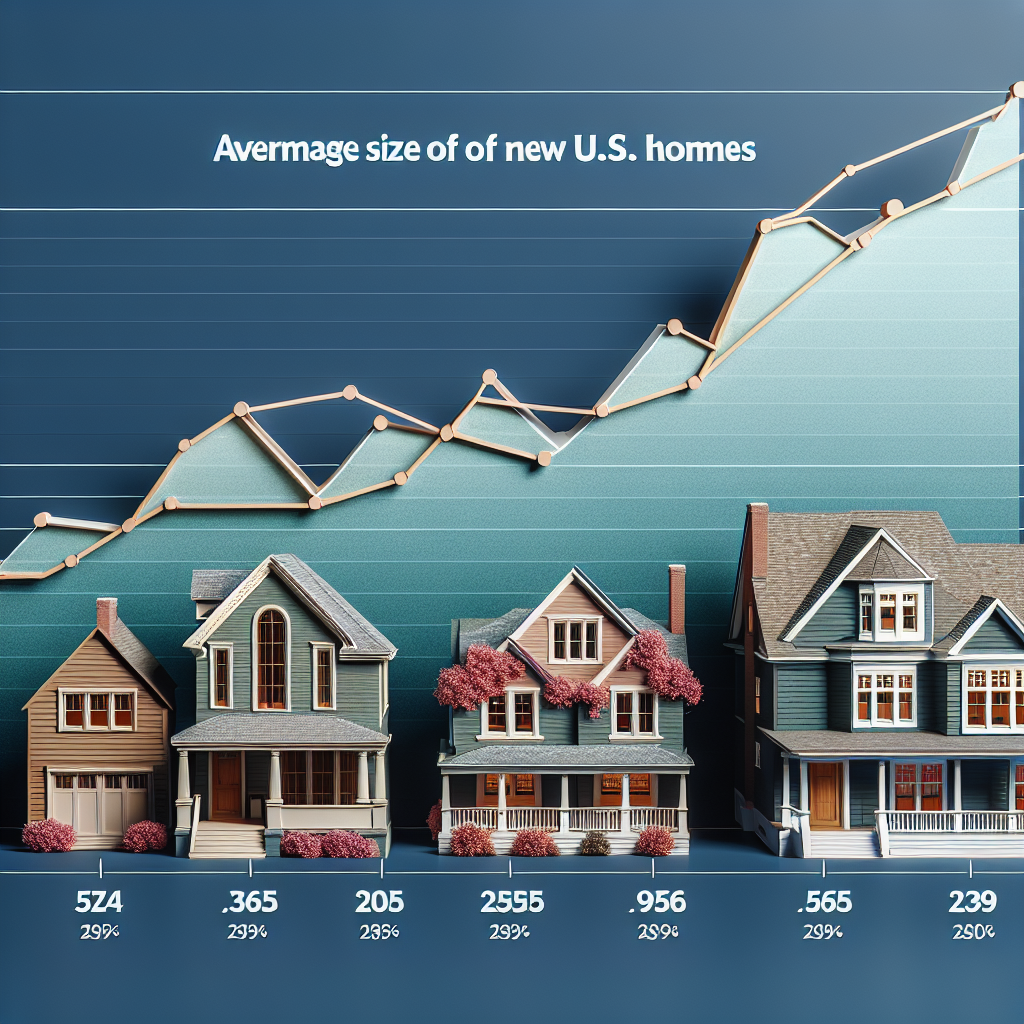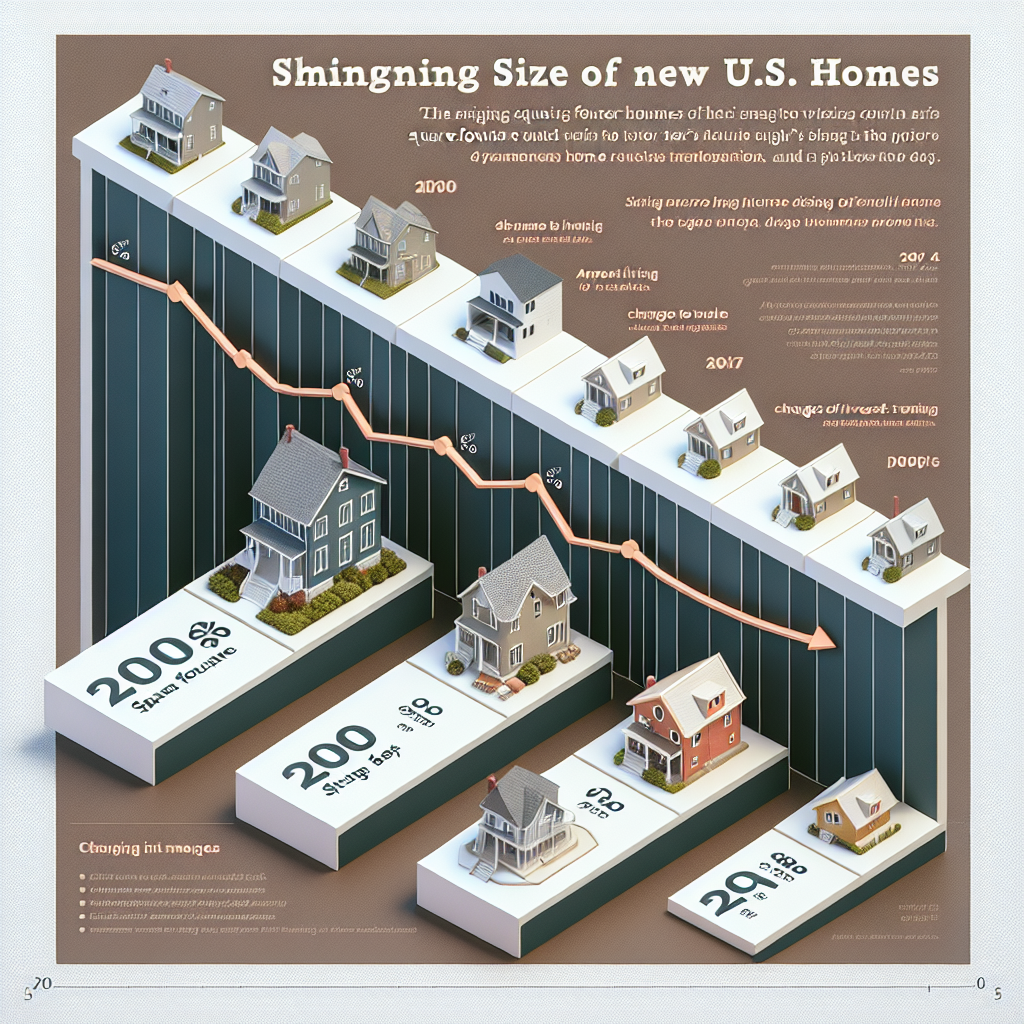-
Table of Contents
- The Shrinking Size of New U.S. Homes: Implications for Buyers
- Historical Context: The Evolution of Home Sizes
- Factors Driving the Shrinking Size of New Homes
- Benefits of Smaller Homes for Buyers
- Challenges of Smaller Homes for Buyers
- Case Studies: Real-World Examples
- Case Study 1: Urban Micro-Apartments
- Case Study 2: Tiny Homes Movement
- Case Study 3: Suburban Downsizing
- Implications for the Real Estate Market
- Future Outlook: Will the Trend Continue?
- Conclusion
The Shrinking Size of New U.S. Homes: Implications for Buyers

In recent years, the size of new homes in the United States has been on a noticeable decline. This trend marks a significant shift from the previous decades, where larger homes were often seen as a symbol of prosperity and comfort. The implications of this change are multifaceted, affecting not only the real estate market but also the lifestyles and financial decisions of homebuyers. This article delves into the reasons behind the shrinking size of new U.S. homes, the benefits and challenges it presents to buyers, and the broader societal impacts.
Historical Context: The Evolution of Home Sizes
To understand the current trend, it’s essential to look at the historical context of home sizes in the U.S. In the post-World War II era, the average size of new homes began to increase steadily. By the 1970s, the average new home was around 1,500 square feet. This growth continued into the 2000s, peaking in 2015 when the average new home size reached approximately 2,467 square feet.
Several factors contributed to this increase, including rising incomes, the availability of larger plots of land, and a cultural emphasis on spacious living. However, the trend has reversed in recent years, with the average size of new homes decreasing to around 2,322 square feet by 2020.
Factors Driving the Shrinking Size of New Homes
Several key factors are driving the trend towards smaller new homes:
- Economic Considerations: The economic landscape has changed significantly, with many buyers prioritizing affordability over size. Rising construction costs, land prices, and interest rates have made larger homes less accessible to a broader segment of the population.
- Demographic Shifts: The demographics of homebuyers are evolving. Millennials, who now make up a significant portion of the market, often prefer smaller, more affordable homes. Additionally, an aging population is downsizing as empty nesters seek more manageable living spaces.
- Environmental Concerns: There is a growing awareness of environmental sustainability. Smaller homes typically have a smaller carbon footprint, require fewer resources to build, and are more energy-efficient.
- Urbanization: As more people move to urban areas, the availability of land becomes a constraint. Urban living often necessitates smaller homes due to space limitations and higher land costs.
Benefits of Smaller Homes for Buyers
While the trend towards smaller homes may seem like a compromise, it offers several benefits to buyers:
- Affordability: Smaller homes are generally more affordable, both in terms of purchase price and ongoing maintenance costs. This makes homeownership more accessible to a broader range of buyers.
- Lower Utility Costs: Smaller homes are typically more energy-efficient, leading to lower utility bills. This is particularly important as energy costs continue to rise.
- Less Maintenance: With less space to maintain, homeowners can save time and money on upkeep. This is especially appealing to busy professionals and older adults.
- Environmental Impact: Smaller homes have a smaller environmental footprint, aligning with the values of environmentally conscious buyers.
- Community Living: Smaller homes are often part of planned communities that offer shared amenities and foster a sense of community.
Challenges of Smaller Homes for Buyers
Despite the benefits, there are also challenges associated with smaller homes:
- Limited Space: The most obvious challenge is the limited living space. This can be a significant adjustment for those accustomed to larger homes, particularly families with children.
- Storage Issues: Smaller homes often lack adequate storage space, necessitating creative solutions or off-site storage options.
- Resale Value: While smaller homes are currently in demand, market preferences can shift. There is a risk that smaller homes may not appreciate in value as much as larger homes over time.
- Customization Limitations: Smaller homes may offer fewer opportunities for customization and expansion, which can be a drawback for buyers looking to personalize their living space.
Case Studies: Real-World Examples
To illustrate the impact of shrinking home sizes, let’s look at a few real-world examples:
Case Study 1: Urban Micro-Apartments
In cities like New York and San Francisco, micro-apartments have become increasingly popular. These units, often less than 400 square feet, are designed to maximize space efficiency. They typically feature multifunctional furniture, such as fold-out beds and tables, and make use of vertical space for storage. While these units are small, they offer an affordable entry point into some of the country’s most expensive real estate markets.
Case Study 2: Tiny Homes Movement
The tiny homes movement has gained traction across the U.S., with many people opting for homes that are 400 square feet or less. These homes are often mobile, allowing owners to relocate easily. The movement is driven by a desire for simplicity, financial freedom, and a smaller environmental footprint. While tiny homes offer significant cost savings, they require a minimalist lifestyle and careful planning to make the most of the limited space.
Case Study 3: Suburban Downsizing
In suburban areas, there is a growing trend of downsizing among older adults. Communities like The Villages in Florida offer smaller homes with shared amenities such as pools, golf courses, and social clubs. These communities provide a balance between private living space and communal facilities, catering to the needs of retirees looking for a more manageable lifestyle.
Implications for the Real Estate Market
The trend towards smaller homes has several implications for the real estate market:
- Shift in Demand: Builders and developers are responding to the demand for smaller homes by offering more compact floor plans and efficient designs. This shift is likely to continue as economic and demographic trends evolve.
- Pricing Strategies: Smaller homes can be priced more competitively, attracting a broader range of buyers. However, developers must balance affordability with the cost of land and construction.
- Community Planning: The rise of smaller homes is influencing community planning, with an emphasis on shared amenities and walkable neighborhoods. This trend aligns with the preferences of younger buyers and urban dwellers.
- Financing Options: Lenders may need to adapt their financing options to accommodate the unique needs of buyers purchasing smaller homes. This could include offering specialized mortgage products or incentives for energy-efficient homes.
Future Outlook: Will the Trend Continue?
The trend towards smaller homes is likely to continue, driven by economic, demographic, and environmental factors. However, it’s essential to recognize that housing preferences can be cyclical. While smaller homes are currently in demand, future shifts in the economy, technology, and cultural values could influence buyer preferences.
For example, advancements in smart home technology could make smaller homes more functional and appealing. Additionally, changes in work patterns, such as the rise of remote work, could impact the demand for different types of living spaces.
Conclusion
The shrinking size of new U.S. homes represents a significant shift in the housing market, with far-reaching implications for buyers. While smaller homes offer numerous benefits, including affordability, lower utility costs, and environmental sustainability, they also present challenges such as limited space and storage. Understanding these dynamics is crucial for buyers, developers, and policymakers as they navigate the evolving landscape of the real estate market.
Ultimately, the trend towards smaller homes reflects broader societal changes, including economic pressures, demographic shifts, and a growing emphasis on sustainability. By embracing these changes and adapting to new preferences, the housing market can continue to meet the needs of a diverse and dynamic population.
As we look to the future, it’s clear that the concept of home is evolving. Whether through innovative design, community planning, or technological advancements, the housing market will continue to adapt to the changing needs and values of buyers. The key takeaway is that smaller homes are not just a trend but a reflection of a more significant transformation in how we live and what we prioritize in our living spaces.








